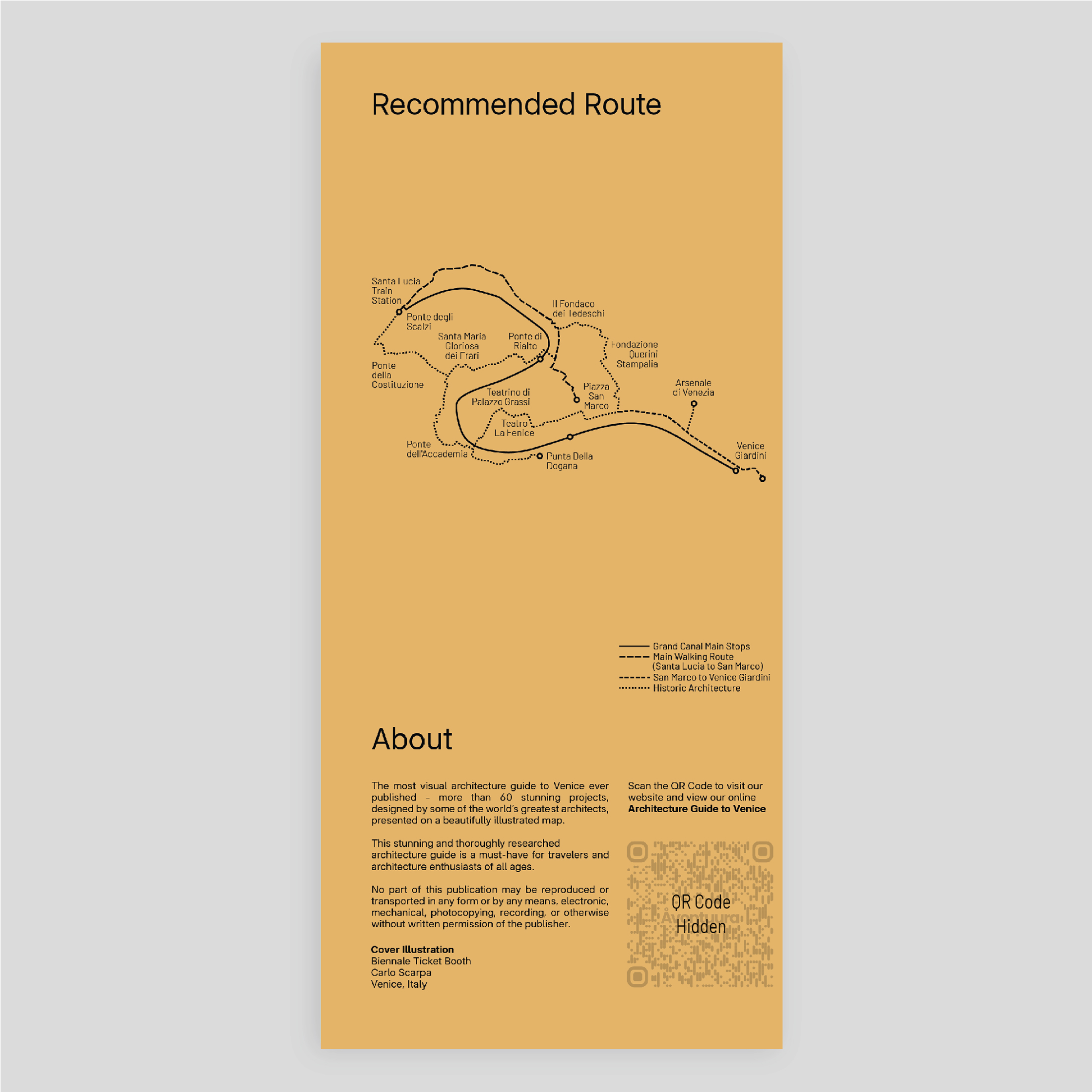The most visual architecture guide to Venice ever published – more than 60 buildings, designed by some of the world’s greatest architects, presented on a beautifully illustrated map to accompany you on your next trip to “The City of Water”.
Venice’s architectural history spans centuries, from the splendor of its medieval and Renaissance landmarks, like Saint Mark’s Basilica and the Rialto Bridge to the modern masterpieces of Venetian architect Carlo Scarpa and his humble ticket booth for the Venice Biennale which graces our cover.
Saint Mark’s, completed in the 11th century, is a masterpiece of Byzantine architecture; its golden mosaics and domes reflecting Venice’s role as a cultural crossroads between East and West. While the Rialto Bridge, completed in 1591 by Antonio da Ponte, symbolizes the city’s economic might during the height of its mercantile power. Built of white Istrian stone, its bold single-span arch was an engineering marvel of its time, bridging the Grand Canal and anchoring the bustling marketplace that once defined the city’s commercial core.
In the 21st century, contemporary architects have reshaped the city’s relationship to its historical fabric. OMA’s renovation of Il Fondaco dei Tedeschi, once a 16th-century trading post, transformed the building into a modern retail and cultural space while preserving its historic identity. The project’s subtle insertions—a glass rooftop terrace and red escalator—respect the building’s layers of history while inviting new public engagement. Similarly, Tadao Ando’s transformation of the Punta della Dogana, a 17th-century customs house, into a contemporary art museum reveals a minimalist sensitivity.
Scarpa himself left a lasting mark on 20th-century architecture through his poetic, detail-driven restorations. His design for the Olivetti Showroom in Piazza San Marco (1958) fuses modernist sensibilities with exquisite craftsmanship—floating stairs, brass fixtures, and terrazzo floors demonstrate his sensitivity to light, texture, and materiality. Equally masterful is Scarpa’s renovation of the Fondazione Querini Stampalia, where he resolved flooding challenges with elegant architectural solutions like water channels, suspended walkways, and an intricately layered courtyard, blending function with artistry. Scarpa’s interventions reveal a profound respect for history, filtered through a deeply modern lens.
The Venice Biennale, founded in 1895, has evolved into one of the world’s most important cultural exhibitions. Its Architecture Biennale, established in 1980, invites global dialogue through national pavilions. Among the most celebrated are Sverre Fehn’s Nordic Pavilion (1962), a concrete structure open to sky and nature, and Alvar Aalto’s Finnish Pavilion (1956), a timber structure with a modular, tent-like form. These pavilions among others, including Scarpa, embody the spirit of innovation, craftsmanship, and contextual sensitivity that continue to define Venice’s architectural legacy.
Includes free shipping worldwide.








Reviews
There are no reviews yet.